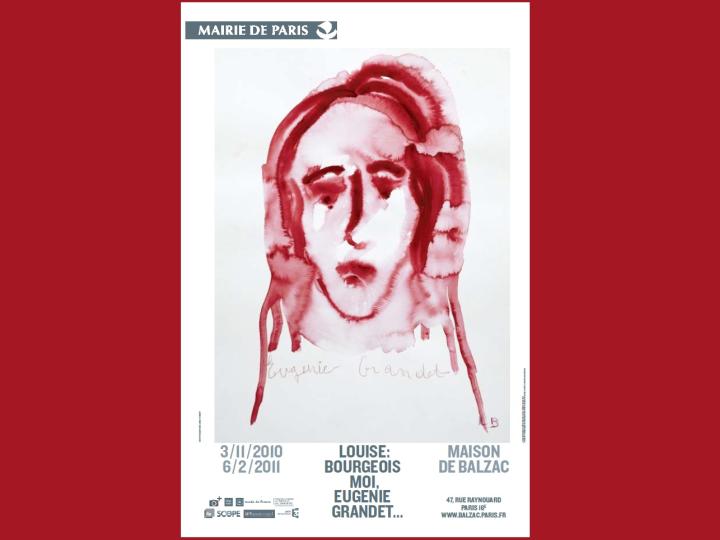Horaires : 10 AM - 6 PM
Plein tarif / Tarif réduit : -
Past Exhibitions
Du 03/11/2010 au 06/02/2011
Horaires : 10 AM - 6 PM
Plein tarif / Tarif réduit : -

Louise Bourgeois, essential artist of the contemporary art scene, had hoped to present in the intimate Maison de Balzac an exposition dedicated to Eugenie Grandet. This unique exhibition, conceived specifically with the museum in mind, didn’t want simply a confrontation with the main character of one of Balzac’s most celebrated works but instead wanted to be a “recurrent identification”, on her own terms, with, “someone who never had the chance to grow,”.
Based entirely on Bourgeios’s memory and “infantine motivations”, her work is autobiographique. For the unaware, her cathartic work re envisions mother-child and father-child relationships.
« I have never grown up
I am standing near the window
I have spent my life making curtains
to hide the dirty glass
I have spent my life making curtains
while watching the building across the way
I have spent my life waiting
I have spent my life washing
dishes and vegetables
I have spent my life going up and down
I have spent my life afraid of the cold
letting out waists and shortening dresses
I have spent my life
listening to the chirping of the birds
the water dripping from the ceiling
and the traffic on 20th street
I have listened to the sound
of the pigeons
The hesitations of the mice
and the bees and the flies before summer
I have spent my life
smelling the burning of the stove
and listening to the starting of the refrigerator
»
Eugenie Grandet, celebrated since its publication in 1833, describes the père Grandet, wine grower with an instinctive avarice, his wife, who was stifled and eventually killed by her husband’s insensitivity, and his daughter Eugenie, sweet, pretty, and likeable, disappointed in her feelings, closed within herself and becomes a charitable but bitter. This Balzac novel therefore describes family, adolescence, pain, and solitude: all themes that Louise Bourgeois, who considered herself not a feminist but someone who “occupies herself with the feminine”, had explored nonstop since her earliest paintings, made at the end of the 30s. There is therefore no surprise that Eugenie Grandet is a central figure in the genesis of Bourgeois’s oeuvre, who saw in Eugenie Grandet “the prototype of a woman that is not yet realized. She is within our struggle to make ourselves happy. This character of Balzac’s is the prisoner of a father who wants a maid, not a daughter. Her destiny is that of a woman who never have the opportunity to be a woman,”
Stranger to embroidery, the feminine technique par excellence that lies for her, ultimately, in the memory of her textile worker mother, Louise Bourgeois reads us many series of works that evoke a previous era, useless occupations, withering away, solitude. An incredible poem -- not lacking in humor-- extricates itself from this art of intimacy, of secrecy, of this artist who has always worked in isolation. This exposition reveals the meeting of two grand artists who, far from each other in terms of time and space, come together by their power of analysis, their lucidity, and their efforts to identify the most secret and most profound motivations of the human soul.
Commissariat scientifique :
Wendy Williams et Yves Gagneux